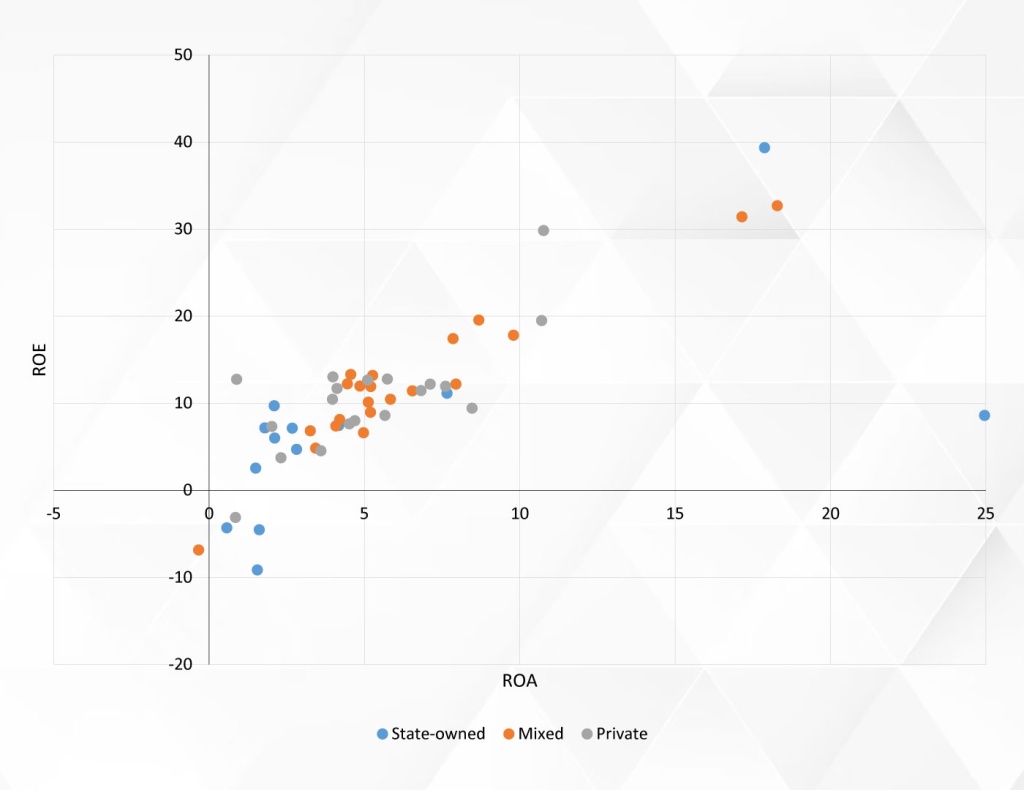Authors:
Carlos Giraldo, Chief economist at Latin American Reserve Fund – FLAR – cgiraldo@flar.net
Iader Giraldo, Principal economic researcher at Latin American Reserve Fund – FLAR – igiraldo@flar.net
In the realm of global economics, the volatility of oil prices stands as a critical determinant of economic stability and growth, particularly for nations whose incomes are closely tied to the ebbs and flows of the oil market. One dimension inside this relationship is the nuanced link between oil prices and the profitability of oil-producing firms, illuminating the broader implications for economic growth. This particular topic is part of our recent working paper emphasizing Latin American economies (See FLAR working paper “Oil Price Volatility and Latin American Growth” jointly authored with Philip Turner (R.I.P).).
The financial health of oil-producing entities is closely tied to oil prices. Historical data shows that the profits of leading international oil corporations have fluctuated in correlation with global oil price volatility. We explored this connection through a microeconomic channel that establishes a link between oil prices and the profitability of oil-producing firms, which are drivers of economic growth in some economies.
To illustrate this connection, Figure 1 shows the correlation between the quarterly profits of larger oil corporations globally and in Latin America and oil prices over the past two decades. The top graph in the figure delineates the trajectory of major international oil corporations, whose profit margins have exhibited synchronicity with global oil prices. This correlation could be observed in the escalating profits aligned with surges in world oil prices before the global financial crisis, during the 2010-2014 boom, and in the months of 2021. Correspondingly, the decrease in profits during the global financial crisis, the commodities crisis in 2014-2015, and the COVID-19 pandemic mirrored the downturn in oil prices.
Figure 1: Profits (ROA), major oil companies (%), and oil prices (US$ per barrel, Rhs)
Source: S&P Capital IQ
These findings underscore the interdependence of oil prices and the profitability of oil-producing firms, which can have significant implications for economic growth and stability in oil-dependent economies. The bottom graph shows the profit trajectories of leading oil corporations in Latin America. The evolution of profits in this region exhibited greater stability than that of their global counterparts, albeit certain firms such as Ecopetrol presented a similar pattern. Petrobras, the region’s largest company, demonstrated remarkable consistency in its profit margins, even amidst drastic fluctuations in oil prices. However, the increase in earnings in recent quarters significantly correlated with oil prices.
The region’s second-largest company, Pemex, delineated an atypical trend that did not correspond with oil prices, with numerous periods reflecting negative profits. This could be attributed to Pemex being state-owned, in contrast to Ecopetrol or Petrobras, which exhibit a mixed capital structure. Such differentiation in capital structure could engender disparities in the financial outcomes of purely state-owned corporations and mixed-capital companies, the latter being more subject to market regulation.
According to certain economic literature, state-owned oil companies tend to exhibit lower financial performance on average than their private international counterparts. Al-Mana et al. (2020) have demonstrated explicitly that, in a group of the fifty largest oil companies worldwide, state-owned oil firms, known as National Oil Companies (NOCs), on average, exhibit lower financial performance than international oil companies do.
To evaluate this finding for developing economies, we compiled data on the major oil-producing firms in emerging economies (Figure 2). Prior to the global financial crisis (top graph), we were unable to discern any patterns between state-owned, mixed, and private oil-producing firms. However, following the global financial crisis (bottom graph), state-owned companies seemed to congregate in a small area near the origin, indicating a lower average financial performance for this type of firm.
Figure 2: Financial performance of oil-producing companies (EMEs)
Our empirical results clearly indicate that oil prices directly influence the returns on assets (ROAs) among oil-producing companies. This relationship is more pronounced in advanced economies compared to Latin American counterparts. Interestingly, the distinct ownership and governance structures that characterize the oil industry in these regions and the utilization of financial instruments that enable firms to hedge against oil price volatility play a significant role in this differential effect.
For example, there is a significant difference in ownership models between the two regions. Latin America has a predominance of state ownership and mixed-capital models, while privately owned corporations are more common in advanced economies. State-owned oil firms often prioritize objectives beyond profitability, such as domestic supply or employment support. Although they have access to government resources that provide some protection against short-term oil price volatility, they could face increased pressure to allocate profits to social expenditure.
On the other hand, privately held oil corporations prioritize profitability and shareholder returns, making them more directly impacted by changes in oil prices. Despite facing similar challenges, their response strategies may differ significantly due to these differences in organizational structure.
The relationship between oil prices and economic growth is complex and requires further research. Some critical areas of inquiry include how oil companies react to price fluctuations, how corporate governance affects financial performance, and how different ownership structures impact the broader economy. As the global economy continues to evolve, it will be increasingly important to understand these issues in order to navigate the future of oil-dependent economies.
References
Al-Mana, A. A., Nawaz, W., Kamal, A., and Koҫ, M. (2020). Financial and operational efficiencies of national and international oil companies: An empirical investigation. Resources Policy, 68, 101701.








